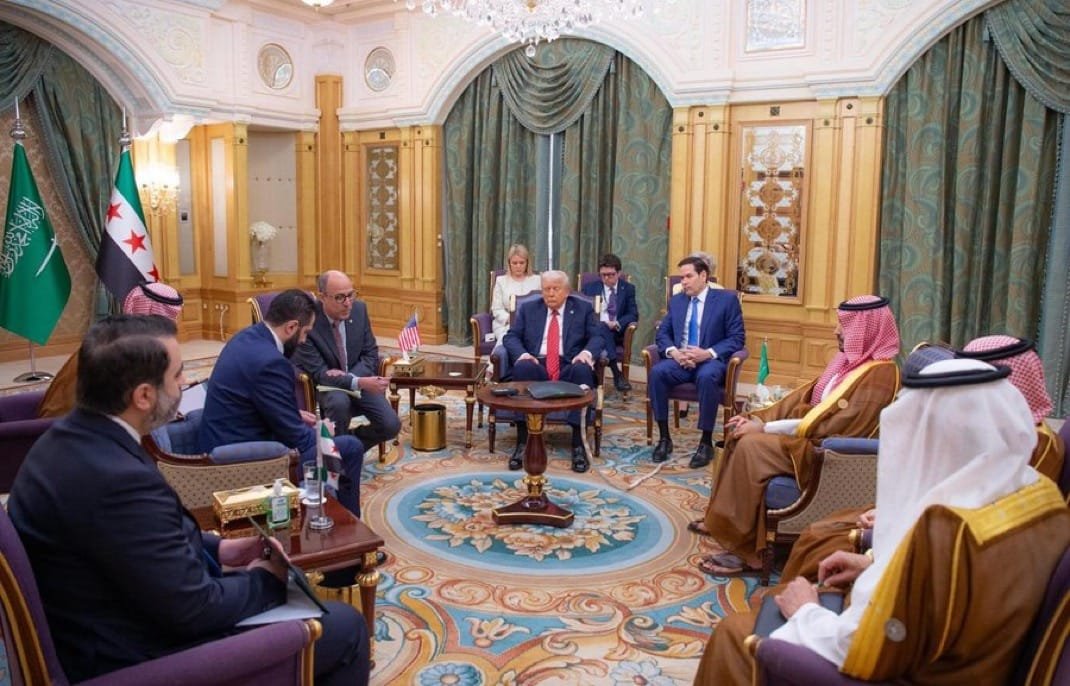
Introduction to the Tariff War
The tariff war between the United States and China emerged as a significant shift in international trade relations during the Trump administration. This conflict, characterized by a series of tariffs on various goods, can be traced back to complex historical relations and economic tensions that had been building for years. The motivations behind these tariffs are deeply rooted in perceived injustices in trade practices and a broader strategy to address America’s trade imbalances with China.
Historically, the economic relationship between the two nations has been marked by both cooperation and competition. China’s rapid industrialization and its emergence as a global economic powerhouse raised concerns in Washington regarding intellectual property theft, unfair trade practices, and state-sponsored subsidies that favored Chinese companies. U.S. manufacturers argued that these practices undermined their competitiveness, leading to significant trade deficits that some policymakers sought to rectify through protective measures.
The catalyst for the tariff war came in early 2018, when the Trump administration announced tariffs on imported steel and aluminum, which disproportionately affected China. These tariffs were soon followed by broader measures aimed at Chinese goods worth billions of dollars. The administration positioned these tariffs as necessary actions to protect American jobs and industries from what it deemed predatory economic behavior by China. This approach marked a stark departure from previous policies that emphasized engagement and collaboration, indicating a preference for confrontation over conciliation.
The imposition of tariffs has not only reshaped the economic landscape but also raised significant geopolitical tensions. As both nations engaged in retaliatory measures, the implications of this trade conflict extended beyond mere economics, igniting debates over national security, technology, and the evolving nature of global trade. Understanding this complex interplay is essential for comprehending the ongoing ramifications of the tariff war that continues to unfold.
Economic Consequences for the US
The ongoing tariff war initiated by the United States against China has produced a significant array of economic consequences that are reshaping various sectors of the American economy. At the heart of this trade policy are tariffs imposed on numerous goods, leading to increased costs for consumers, businesses, and overall economic growth. Initially, many expected that these tariffs would bolster domestic industries by reducing foreign competition; however, the reality has revealed more complicated outcomes.
One immediate effect of the tariffs is the increased price of imported goods, which can lead to inflationary pressures in the U.S. economy. For instance, American consumers have started to notice higher prices on products ranging from electronics to clothing. This increased cost burden on households may lead to reduced discretionary spending, potentially hampering economic growth. The cost of consumer goods has been a concern, especially for lower-income families who spend a larger portion of their income on such essentials.
Industries that rely heavily on Chinese imports, such as agriculture and manufacturing, have also faced significant challenges. Many U.S. farmers are experiencing a decline in exports due to retaliatory tariffs imposed by China on American agricultural products, leading to reduced revenues and greater financial strain. Additionally, manufacturing companies that source components from China have reported disruptions in supply chains. Such interruptions can result in delays in production and ultimately impact jobs across various sectors.
As these economic ramifications continue to unfold, labor markets also reflect the changes. Reports show that while some job sectors benefit from tariff policies, others are adversely affected, leading to job losses in vulnerable industries. This fluctuating job market underlines the complex relationship between trade policies and employment. Overall, while the intention of the tariffs may have been to protect domestic industry, the broader economic outlook suggests a nuanced scenario where both immediate and long-term consequences warrant close scrutiny.
Retaliation from China
The trade war initiated by the United States has elicited significant retaliatory measures from China, reflecting its resolve to protect its economic interests against the imposition of tariffs. Following the introduction of U.S. tariffs on Chinese goods, China responded in kind by implementing its own tariffs on a variety of U.S. products. This reciprocal approach aimed not only to shield its economy but also to signal its defiance against what it viewed as unilateral trade aggression from the U.S.
China’s retaliatory tariffs targeted key industries, including agriculture, automotive, and aerospace, thereby impacting U.S. exports significantly. Notably, American farmers, who had increasingly relied on the Chinese market, found themselves facing diminished demand for products such as soybeans and pork. This not only harmed domestic producers but also contributed to increasing political pressure on U.S. policymakers to reconsider the tariff strategy.
In addition to tariffs, China employed various non-tariff measures to mitigate the effects of the trade war. These measures included tightening regulations on foreign companies operating within China and leveraging state-owned enterprises to divert imports from punitive suppliers. This strategic maneuvering allowed China to cushion the impact of tariffs while simultaneously showcasing its economic resilience.
The ramifications of these retaliatory actions extend beyond immediate trade balances. They have fostered a tense atmosphere that complicates future negotiations, making it challenging for both nations to reach a sustainable resolution. As the trade war continues to evolve, the effectiveness of China’s strategies in neutralizing the adverse effects of U.S. tariffs will be vital to its long-term economic stability and its position on the global stage.
International Repercussions
The tariff war initiated by the United States against China has far-reaching implications beyond the two nations involved. This conflict has altered global trade dynamics significantly, influencing relationships and agreements between a multitude of countries. As the tariffs on Chinese goods rose, other nations began to react, demonstrating how interconnected the global economy is and how one nation’s policies can shape international markets.
Countries that rely heavily on trade with China or the United States have been forced to navigate the complexities of heightened tariffs. For instance, nations in Southeast Asia have taken advantage of the situation, experiencing increased exports as companies seek alternatives to manufacturing in China. This shift is stimulating economies in regions like Vietnam, where a surge in foreign investment is noted as businesses relocate to escape tariffs. Such realignments not only reaffirm the importance of trade but also highlight vulnerabilities in existing international trade agreements.
Furthermore, the tariff war has resurfaced underlying tensions regarding multilateral trade agreements. Countries like Canada, Mexico, and members of the European Union are keenly observing the developments, as they potentially face economic repercussions due to shifts in U.S.-China relations. The growing isolationist stance of the U.S. may hinder cooperative trade discussions, leading to a fragmented global trade environment.
Moreover, emerging economies are reassessing their trade alliances, often gravitating towards China as it seeks to cement its position as a global leader. This pivot may result in new partnerships that undermine the traditional dominance that the United States has held over international trade policies. As nations recalibrate their trade strategies, the impacts of the tariff war will likely resonate for years, prompting discussions about the future of global trade and the principles that govern it.
Impact on Global Supply Chains
The ongoing tariff war between the United States and China has significantly disrupted global supply chains, compelling various industries to reevaluate their production and sourcing strategies. As a response to increased tariffs on Chinese imports, companies have sought to mitigate costs by exploring alternative supply chain routes. This has led to notable shifts in manufacturing locations, particularly in industries such as electronics, textiles, and automotive.
One prominent example can be observed in the electronics sector. Many firms have begun relocating their production facilities to countries such as Vietnam, Malaysia, and India. For instance, companies like Apple and Samsung have intensified their efforts to diversify their supply chains, partly driven by the import tariffs levied on Chinese goods. This decrease in reliance on Chinese production has allowed these corporations to maintain competitiveness in pricing, while simultaneously adhering to the new trade policies. However, such alterations have not been without challenges. The transition to new manufacturing hubs often necessitates significant investments in infrastructure and workforce development, which can prolong the time frame for achieving operational efficiency.
Additionally, the tariff war has spurred difficulties in sourcing raw materials. Previously, manufacturers enjoyed the efficiencies realized from streamlined global supply chains that relied heavily on imports from China. With the introduction of tariffs, companies have faced increased costs and delays in procuring essential components, as they scramble to align their operations with new trade realities. A case in point involves the automotive industry, where manufacturers such as Ford and General Motors have reported vulnerabilities in their supply chains, leading to production slowdowns and, ultimately, decreased revenues.
The ongoing adjustments illustrate the far-reaching implications of the tariff conflict. The need for flexibility in supply chains has never been more pronounced, as businesses strive to navigate an increasingly complex international trade environment. Consequentially, those companies that proactively adapt to these changes are more likely to survive and thrive in the post-tariff landscape.
Political Ramifications in the US
The ongoing tariff war between the United States and China has significantly influenced the political landscape within the US, reshaping congressional dynamics, electoral strategies, and public opinion. As tariffs have been imposed on various goods, the repercussions have resonated through the economy, causing a spectrum of reactions among different political factions and constituents. Lawmakers find themselves navigating the complexities introduced by trade policy, often leading to split allegiances based on regional interests.
In many cases, the tariff war has solidified support for populist sentiments among certain voter demographics. The Trump administration’s approach to trade, championing national interests and advocating for American workers, has resonated with those who feel left behind by globalization. However, this trade policy also poses a potential risk for the Republican Party as it could alienate business interests that favor free trade. Thus, congressional dynamics are becoming increasingly polarized, with representatives weighing their positions carefully to maintain electoral support while addressing economic implications.
Public opinion surrounding the tariff war has been notably divided. While some segments of the population applaud the administration’s efforts to take a stand against China, viewing it as a necessary measure to protect American industry, others express concerns over rising prices and the potential for job losses in sectors reliant on trade. This divergence has implications for electoral politics, as candidates must articulate their positions on trade in a manner that resonates with their constituents while aligning with broader party agendas.
Ultimately, the political ramifications of the tariff war are far-reaching, affecting not only the strategies and perceptions of lawmakers but also the electoral outcomes in upcoming elections. As the situation continues to evolve, it remains crucial for political actors to address trade policy transparently while gauging public sentiment accurately. A balanced approach that acknowledges both the need for protective measures and the realities of global commerce will be essential moving forward.
Future Prospects for US-China Trade Relations
As the dynamics of US-China trade relations evolve, various factors could significantly influence the future landscape of their interactions. The political climate in the United States, characterized by changes in leadership and policy priorities, plays a crucial role. A shift in administration could lead to a reevaluation of current tariff strategies and trade agreements, with potential ramifications for the agricultural and manufacturing sectors that rely heavily on exports to China.
Economic trends also serve as a driving force in shaping bilateral trade. For instance, if the U.S. economy experiences a slowdown, pressure may mount on policymakers to seek improved relations with China, aiming to stabilize trade flows and bolster domestic economic performance. Conversely, if the Chinese economy continues its ascent, particularly with the rise of technology enterprises, such as those in artificial intelligence and renewable energy, the U.S. could find itself at a competitive disadvantage. This scenario might escalate the competition rather than foster collaboration.
Furthermore, ongoing negotiations surrounding trade issues remain pivotal. Diplomatic dialogues between the two nations can either alleviate tensions or further exacerbate them, depending on the outcomes. Critical areas of focus include intellectual property rights, trade deficits, and market accessibility, each playing a role in either mitigating or intensifying the existing tariffs and trade barriers. The recent history of trade discussions illustrates the complexities at hand, as both nations navigate an intricate web of economic dependencies while grappling with their domestic agendas.
In light of these factors, the future of US-China trade relations remains uncertain. Scenarios could range from a significant escalation of tariffs and trade disputes to potential resolutions that facilitate a more cooperative economic environment. The interplay of political, economic, and diplomatic factors will undoubtedly shape this relationship in the years to come.
Lessons Learned from the Trade War
The ongoing tariff war between the United States and China has prompted a reevaluation of globalization and trade policy on a global scale. One significant lesson learned is the inherent complexity and interdependence of international trade systems. The imposition of tariffs by the U.S. aimed to protect domestic industries from foreign competition; however, it resulted in unintended consequences that reverberated throughout supply chains, affecting not only American manufacturers but also consumers due to higher prices on imported goods. This has highlighted the fragility of relying heavily on global markets and the potential vulnerabilities that domestic economies may experience in times of heightened trade tensions.
Furthermore, the trade war has underscored the importance of a well-rounded trade policy that goes beyond punitive measures. The successes claimed by the U.S. administration, such as certain sectors experiencing temporary boosts, must be weighed against the broader economic impacts. The agricultural sector faced substantial losses owing to retaliatory tariffs from China, leading to significant financial struggles for American farmers. This exemplifies how targeted tariffs can inadvertently undermine specific industries while failing to deliver the intended protectionist benefits.
As countries reassess their positions in the global marketplace, the necessity for diversified supply chains becomes increasingly clear. The tariff war serves as a cautionary tale, indicating that over-reliance on a single market can expose domestic industries to greater risks. For future trade policies, it will be critical for nations to prioritize cooperation and multilateralism while addressing the disparities within their economies. By doing so, countries may foster resilience against fluctuations in trade relations and create a more balanced economic framework that can withstand global challenges.
Conclusion: The Road Ahead
In reflecting on the tariff war between the United States and China, it is imperative to acknowledge the intricacies that define US-China relations. This ongoing conflict has far-reaching implications, not only for the economies of both nations but also for global trade dynamics. Through a series of tariffs and retaliatory measures, the two countries have entered a contentious arena that has affected countless industries and consumers. The fallout from these policies has revealed vulnerabilities within the interconnected global marketplace.
The tariff measures have aimed to protect American industries and reduce the trade deficit; however, the realities of a globalized economy complicate these objectives. American businesses often rely on Chinese imports for essential components, and this reliance is mirrored across various sectors. Consequently, the tariffs may inadvertently harm domestic companies while failing to achieve the intended results. Furthermore, consumers face higher prices due to these levies, which could lead to decreased spending and slower economic growth.
Looking ahead, both nations must navigate a pathway toward cooperative resolution. While the imposition of tariffs is a tactic employed to gain leverage, it is crucial to consider longer-term strategies for constructive engagement. Open dialogues and negotiations are essential for addressing underlying issues such as intellectual property theft, currency manipulation, and trade practices. The complexities of this relationship indicate that a simplistic approach will not suffice. Mutual understanding and compromise may pave the way for more sustainable trade relations.
In conclusion, as the tariff war continues to unfold, the potential outcomes remain uncertain. Both the United States and China need to reevaluate their stances and seek opportunities for collaboration that can ultimately benefit their economies and promote global stability. Understanding the nuances of this ongoing situation will be vital for policymakers, businesses, and consumers alike, as they navigate the shifting tides of international trade.






